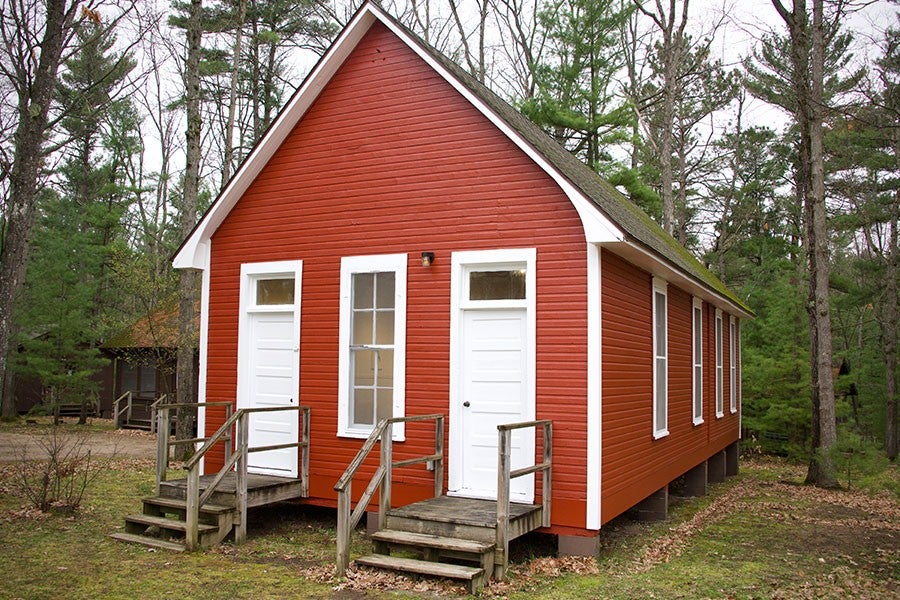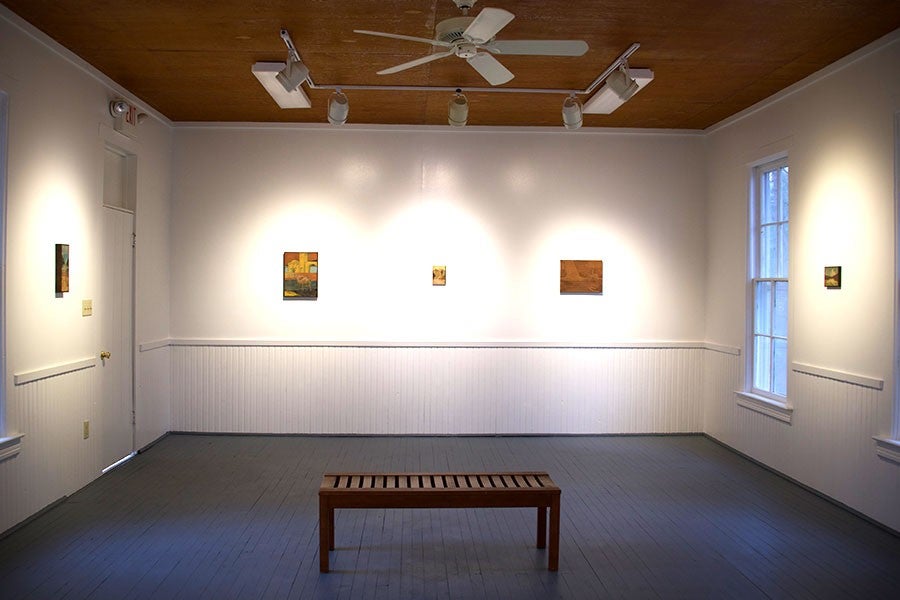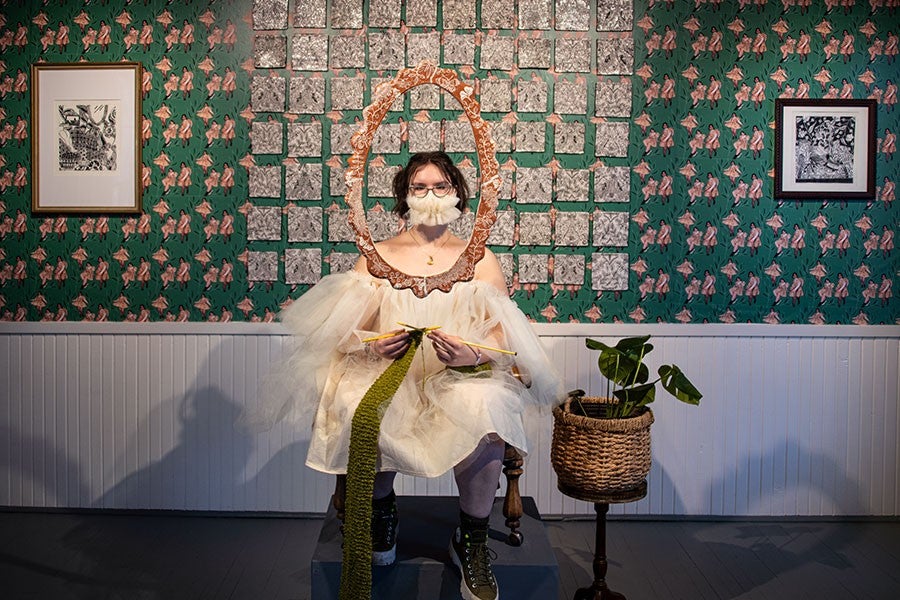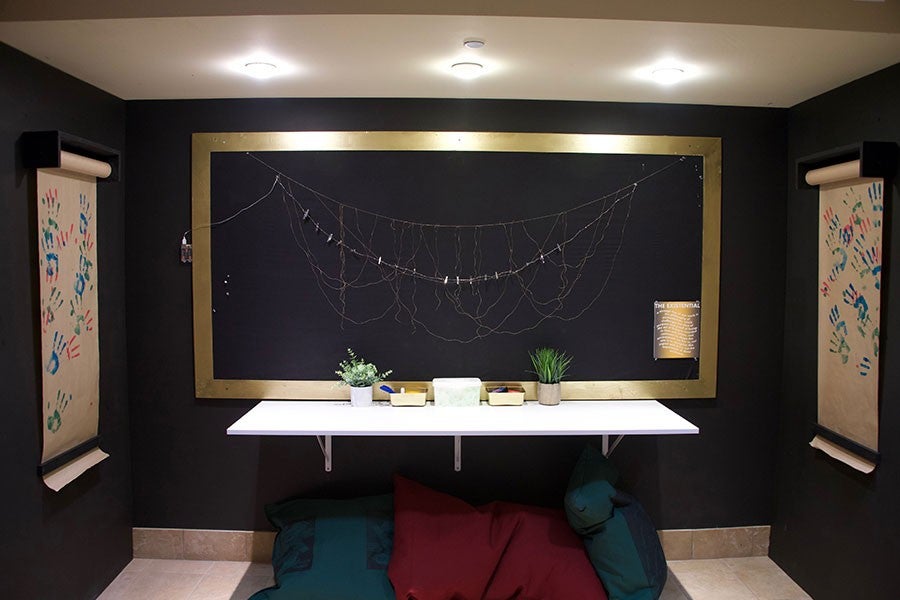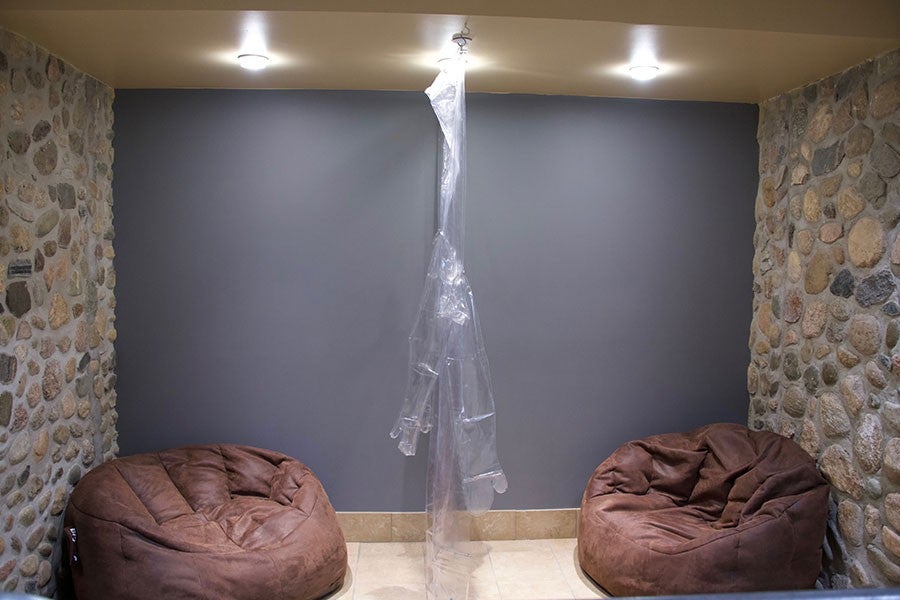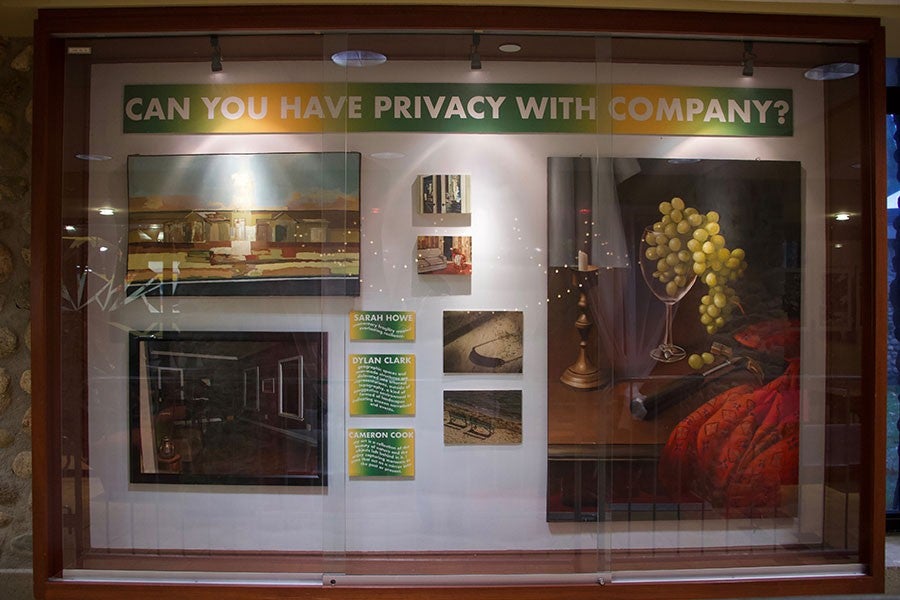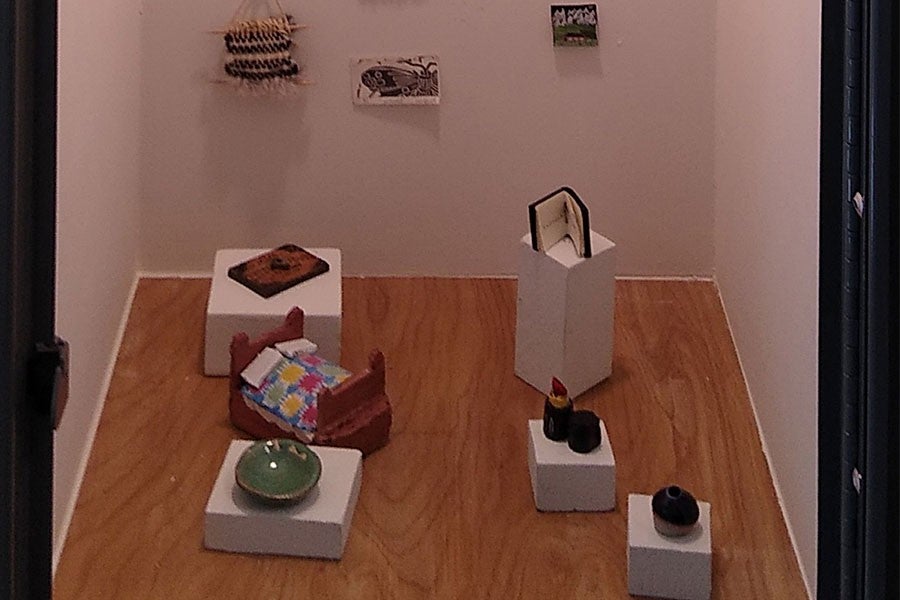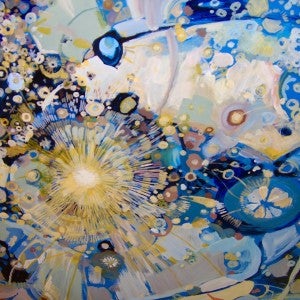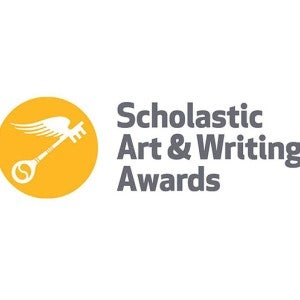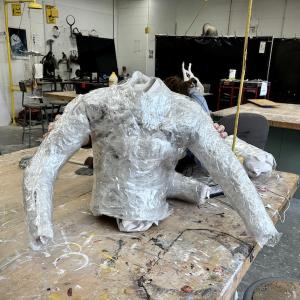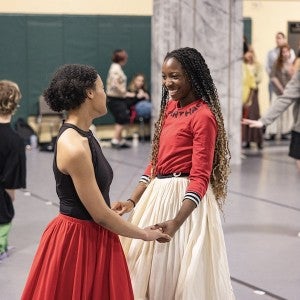Fostering creativity in unexpected places
From a small locker to a renovated schoolhouse, alternative gallery spaces on the Interlochen campus showcase visual art in new and innovative ways.
In the fall of 2019, while his colleagues on the Interlochen Arts Academy faculty were dreaming up ambitious projects for their students, Instructor of Visual Arts Conor Fagan was thinking small.
Fagan transformed a student locker into Gallery One One—a tiny exhibition space for miniscule art—and challenged his students to create pint-sized works.
“In visual arts, we’re always looking for a new way of doing something,” says Director of Visual Arts Mindy Zacher Ronayne. “You get into ruts sometimes, where you’re only making certain things and going down one path. You have to get shaken up, you have to be challenged, and you have to take risks.”
The COVID-19 pandemic caused just such a challenge. When students returned to a socially distanced campus in the fall of 2020, Ronayne was eager to mitigate crowds in the Dow Center for Visual Arts gallery. Inspired by Gallery One One, Ronayne encouraged students to explore other untapped and unexpected locations.
Over the course of the school year, students worked with faculty and maintenance staff to spread out across campus and identify new spaces, allowing for the safe exhibition of their artwork. From the Giddings Concourse to the Little Red Schoolhouse, faculty, staff, and Academy students imagined and realized alternative exhibit spaces, with attention to social distancing, small crowds, and disease prevention.
The prototype: Gallery One One
Fagan’s original gallery can be found in an unassuming hallway of the Herbert H. and Barbara C. Dow Center for Visual Arts. Just 12 inches wide and 34.5 inches in length, Gallery One One transformed a run-of-the-mill locker—number 11, hence the gallery’s name—into a trove of tiny treasures.
“Gallery One One brings some levity to the art show experience while highlighting the fact that work needn’t be large or imposing to say something important,” Fagan says. “As an artist in the 21st century, I find injecting a bit of absurdity into the process of showing art to be ironically uplifting. Gallery One One is a project filled with tongue-in-cheek earnestness.”
Inside the locker, tiny paintings and sculptures are exhibited on tiny pedestals and shelves. Ronayne worked with maintenance staff to feed electricity to the locker, so that the miniature exhibit can be illuminated in all its minute glory. Students and guest artists alike have created miniature pieces to fit the space, some of which live on in the permanent collection and archive in locker 12.
Inspiring students with concourse installations
With the Giddings Concourse bifurcated with steel stanchions to facilitate social distancing during the 2020-21 Academy year, students stepped up to animate part of the space to make it more appealing.
“We took over the alcoves and all of the cases in front of the library,” Ronayne says. “It was fantastic. Each group of students got a case and an alcove to share an idea.”
The students were issued a twofold design challenge: create a welcoming space in a designated section of the concourse that would also support public health. In workshops, students considered what artwork would best fit the cases and alcoves, as well as what artwork would uplift others.
The themes of the installations invited visitors to think about their heritage, their true nature, and even the warmth of an embrace. One installation, the “hugging area,” used two bean bags and a clear shower curtain to create a way for people to hug one another while still being protected against COVID-19.
“It’s so important to pull art out of the gallery and to realize that art can be anywhere,” Ronayne says.
Transforming the Little Red Schoolhouse
Perhaps the greatest transformation happened in the Little Red Schoolhouse on the far end of campus. The historic building, previously used for junior instrument exploration at Arts Camp, was transformed to host the thesis exhibitions of two students, Dylan Clark (IAA 20-21) and Sophia Bassett (IAA 20-22).
“Getting the Red Schoolhouse set up as a gallery space was a huge collaborative effort,” Clark says. “We had a lot of help from the maintenance staff with fixing up the walls and painting them. I don’t think the idea would have happened without their help.”
Bassett, a postgraduate visual arts student and recipient of the President’s Award, was inspired by using the old space to showcase new work.
“As I was creating, I realized the work I had been making would be better showcased in space that isn't the typical white-walled gallery,” Bassett says. “As soon as I walked in, I instantly knew there wasn't a space more perfect to showcase the work I had put my heart and soul into over the past year.”
For Bassett, the Interlochen campus was the perfect retreat during the pandemic. Still, she longed to create comforting experiences through her art.
“Interlochen's campus, in itself, is my own little slice of paradise, so it's quite difficult to compete with that. But I feel the space I created in the Little Red Schoolhouse is almost a portal into another place,” Bassett says. “I intended for the viewers of my show to feel comfortable and at peace within the chaos of the state of the world.”
Bassett said the show stretched her abilities, leading her to use mediums she had no experience with and never intended to use. She learned to document her artwork and fashion pieces using a camera, experimented with ceramics, and attempted new projects, such as building wire body cages, reupholstering a chair, and hanging wallpaper.
“I went into last year as a printmaker and fashion designer, and I came out of it using and loving almost every medium imaginable,” Bassett says. “Being a part of creating this space on campus showed me that anything is possible as long as you put your mind to it, even during a global pandemic.”
For Clark, too, setting up an exhibit in the schoolhouse was a very different experience than installing work in the student gallery.
“It was a lot more challenging, but also more rewarding,” Clark says. “Having shows outside the gallery space is always interesting. It gives a lot of room to explore different formal possibilities, while challenging you to engage with a space that isn't as neutral as a big white box.”
The idea to transform several spaces into galleries surfaced during COVID-19, but Clark maintains the spaces will continue to serve and inspire visual arts students for years to come.
“Ideally, it's not just a global pandemic that makes us inspired to work, or to explore different ways of presenting art,” Clark says. “I hope that our project will open the door for other students to make use of the Interlochen campus in new ways.”
